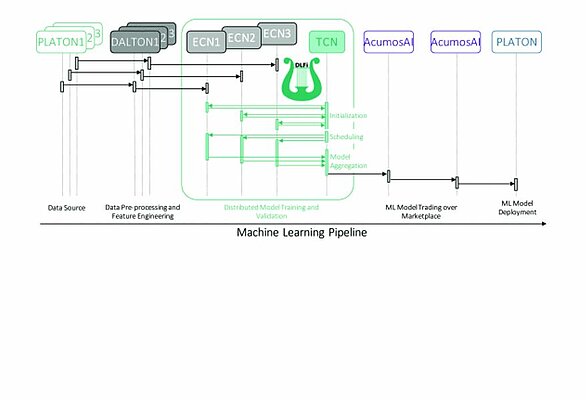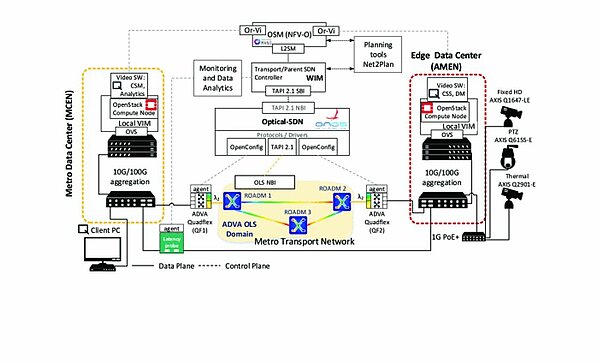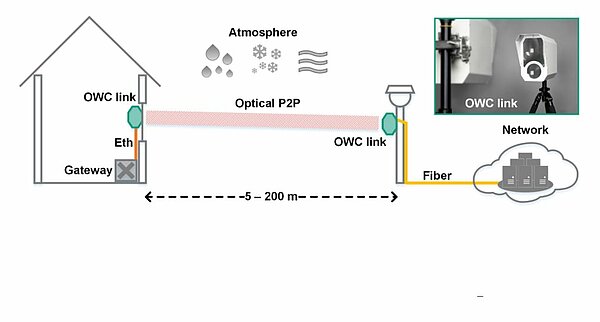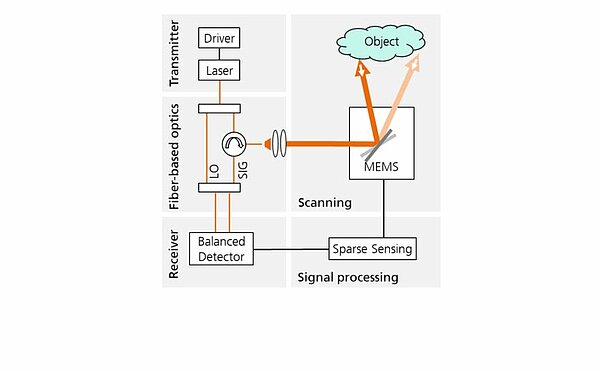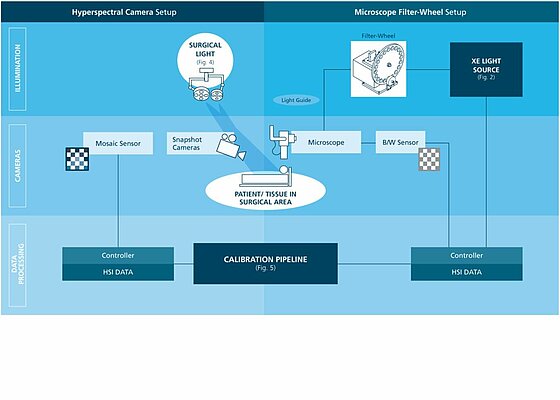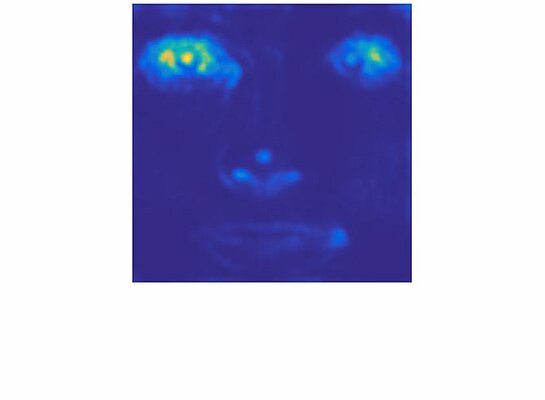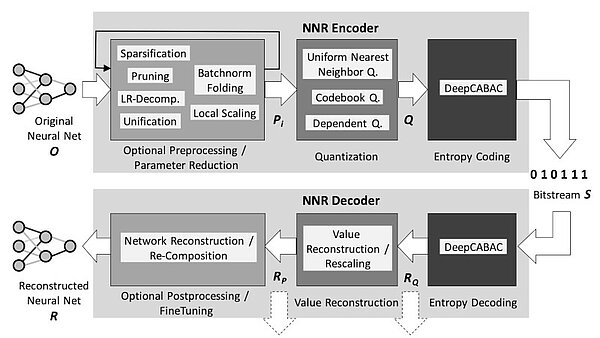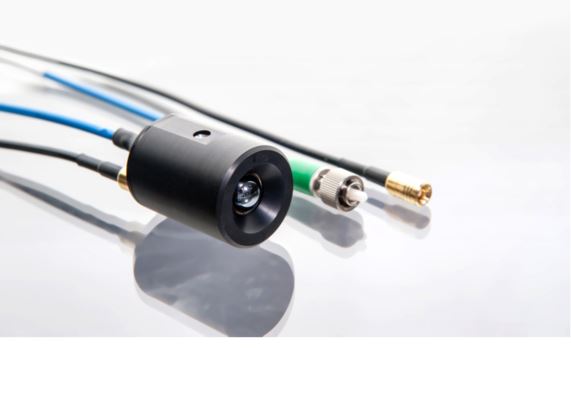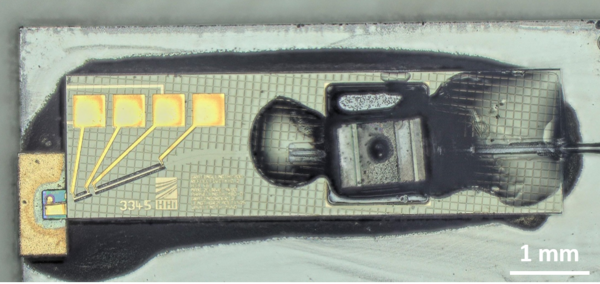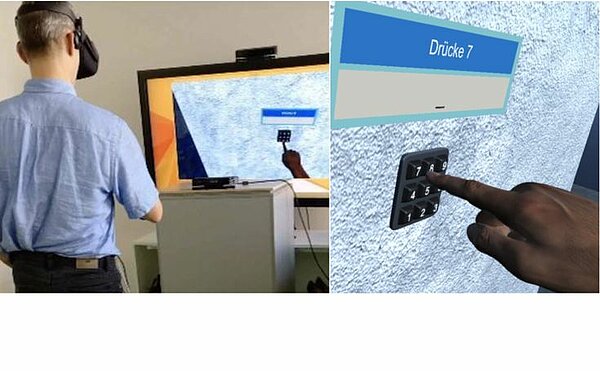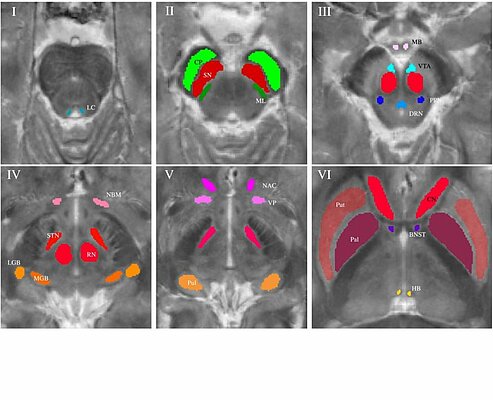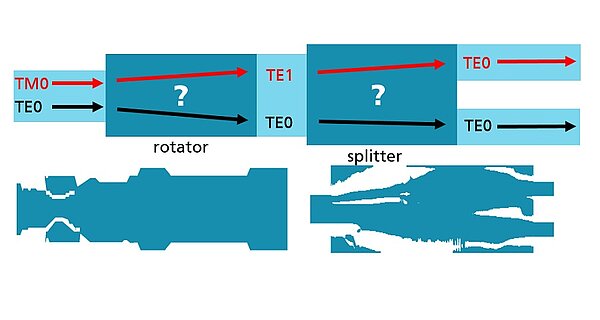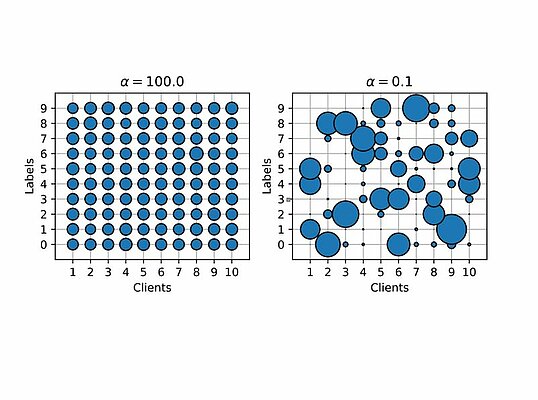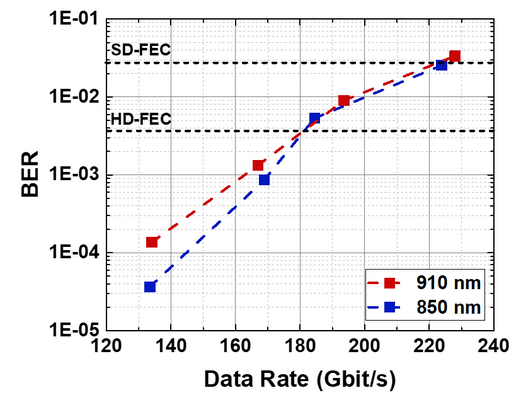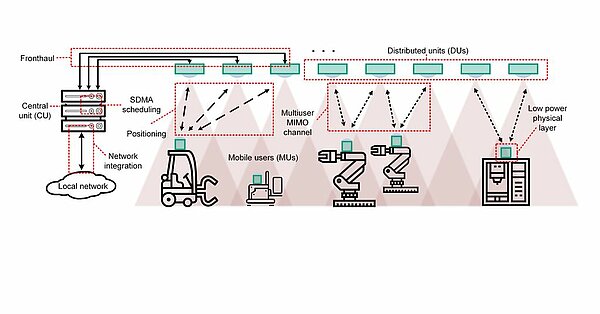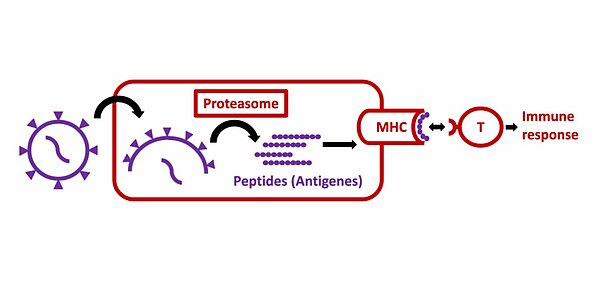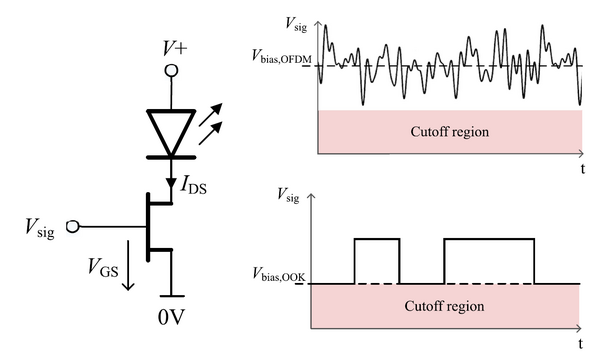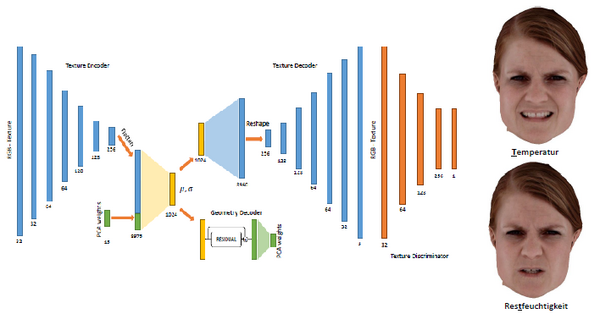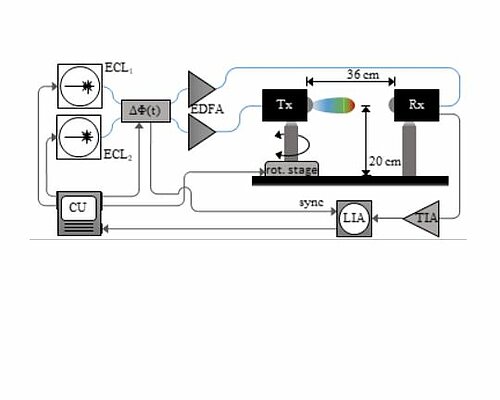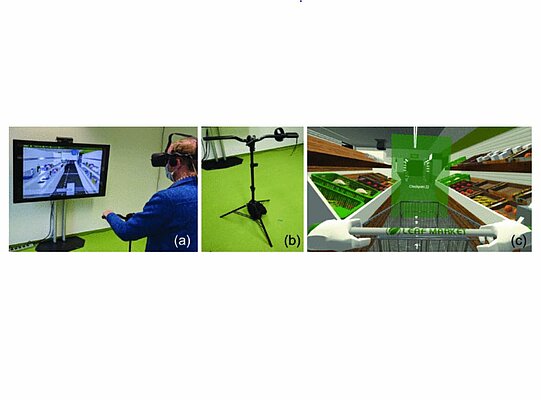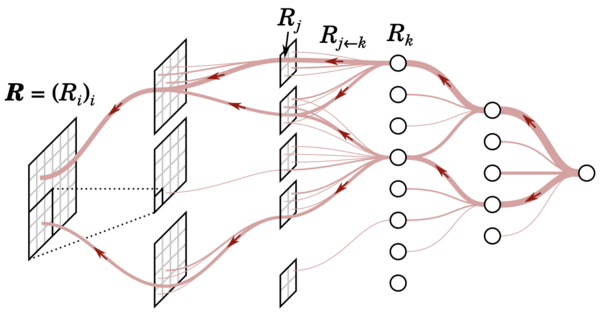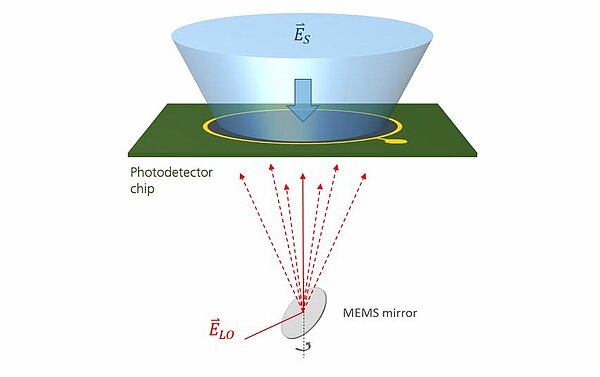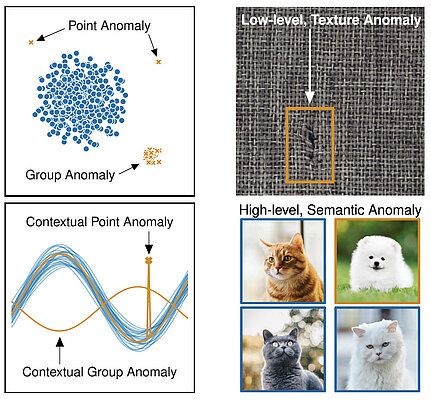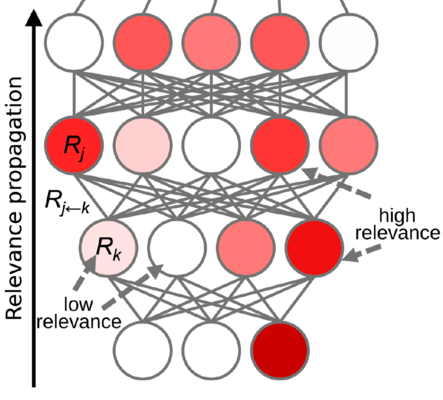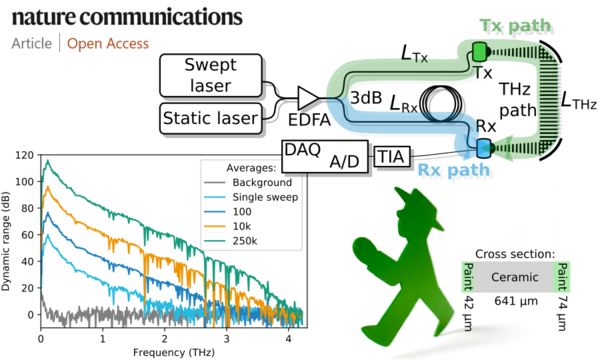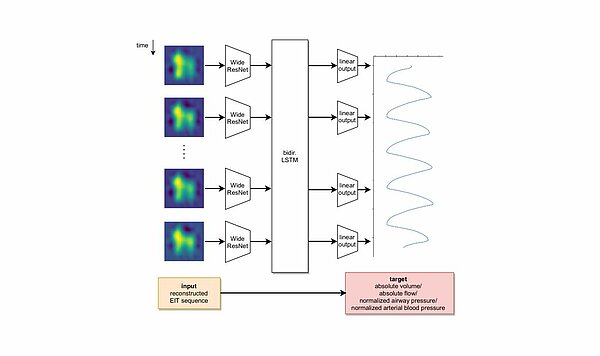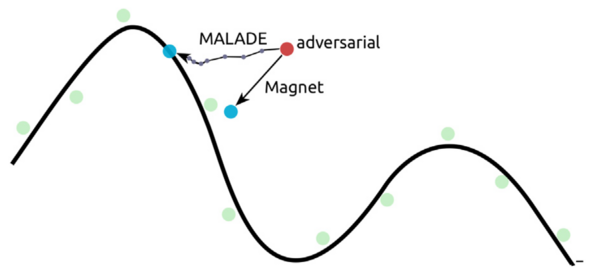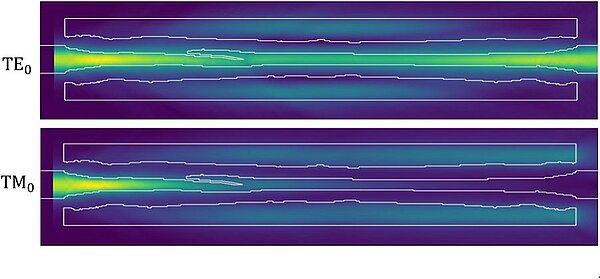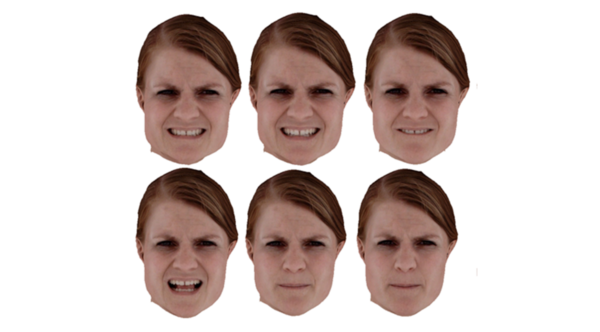Inter-Operator Machine Learning Model Trading over Acumos AI Federated Marketplace
We demonstrate the development of a QoT classifier over an autonomous machine-learning pipeline, the trading of the classifier over a federated marketplace, and eventually its deployment in the customer’s network as a cloud-native...
A Latency-Aware Real-Time Video Surveillance Demo: Network Slicing for Improving Public Safety
We report the automated deployment of 5G services across a latency-aware, semi-disaggregated, and virtualized metro network. We summarize the key findings in a detailed analysis of end-to-end latency, ! service setup time, and soft-failure...
All-Indoor Optical Customer Premises Equipment for Fixed Wireless Access
We demonstrate an LED-based optical wireless link for fixed wireless access applications, at data rates of 1.5 Gbit/s over 50 m. The design is robust against vibration and the infrastructure module can be deployed, e.g., at a lamppost with no...
Fiber-based Frequency Modulated LiDAR With MEMS Scanning Capability for Long-range Sensing in Automotive Applications
Safe operation of driver assistance systems remains a challenge, especially at higher speeds. It requires sensor technology that is capable of detecting surrounding conditions even at large distances. LiDAR technology is a cornerstone of this...
Validation of two Techniques for Intraoperative Hyperspectral Human Tissue Determination
In this paper, we introduce and validate two different hyperspectral intraoperative imaging setups and their use for the analysis of optical tissue properties. First, we present an improved multispectral filter-wheel setup integrated into a fully...
Focused LRP: Explainable AI for Face Morphing Attack Detection
The task of detecting morphed face images has becomehighly relevant in recent years to ensure the security of automaticverification systems based on facial images, e.g.automated border control gates. Detection methods basedon Deep Neural Networks...
Overview of the Neural Network Compression and Representation (NNR) Standard
Neural Network Coding and Representation (NNR) is the first international standard for efficient compression of neural networks. The NNR standard contains quantization and an arithmetic coding scheme as core encoding and decoding technologies, as...
Photoconductive THz Sources Driven at 1550 nm
In this book chapter we review photoconductive (PC) terahertz (THz) sources in the 1550-nm region. We contrast the two most common types of devices in the context of the two common implementations as PC switches and photomixers. We also...
Tunable DBR Laser with Integrated Optical Isolator
Integration of a tunable DBR laser with an optical isolator in a polymer platform achieves 38 dB isolation over 17 nm tuning range and 5.6 mW output power. This is the first demonstrated integration of a DBR laser together with an optical...
Exploring Button Designs for Mid-air Interaction in Virtual Reality: A Hexa-metric Evaluation of Key Representations and Multi-modal Cues
The continued advancement in user interfaces comes to the era of virtual reality that requires a better understanding of how users will interact with 3D buttons in mid-air. Although virtual reality owns high levels of expressiveness and...
Multiparametric MRI for characterization of the basal ganglia and the midbrain
In this joint work with the University of Heidelberg, German Cancer Research Center, University Hospital of Erlangen we showed that multimodal quantitative MR enabled excellent differentiation of a wide spectrum of subcortical nuclei with...
Inverse-Designed InP-Based Polarization Rotator-Splitter
A size-reduced InP-based inverse-designed polarization rotator splitter is presented, being the first demonstration of a topology optimized passive waveguide component on InP. The manufactured device has extinction ratios >10dB for both...
CFD: Communication-Efficient Federated Distillation via Soft-Label Quantization and Delta Coding
Communication constraints prevent the wide-spread adoption of Federated Learning systems. In this work, we investigate Federated Distillation (FD) from the perspective of communication efficiency by analyzing the effects of active...
Serial Data Transmission at 224 Gbit/s Applying Directly Modulated 850 nm and 910 nm VCSELs
In collaboration with VI Systems and the University of Warsaw, HHI has demonstrated data rates of over 200 Gbit/s for the optical short haul. This was made possible by a new generation of VCSELs with over 30 GHz bandwidth in combination with...
Distributed Multiuser MIMO LiFi Networks for Industrial Wireless Communication
LiFi exhibits characteristics that make it highly suitable as a wireless communication technology for industrial applications. As such, LiFi provides deterministic propagation, the potential for very high data density, use of license-free...
Predicting the Binding of SARS-CoV-2 Peptides to the Major Histocompatibility Complex with Recurrent Neural Networks
Predicting the binding of viral peptides to the major histocompatibility complex with machine learning can potentially extend the computational immunology toolkit for vaccine development, and serve as a key component in the fight against a...
A Physical Layer for Low Power Optical Wireless Communications
With the goal of enabling optical wireless communications for mobile devices, we assess a physical layer based on high-bandwidth on-off keying modulation. This allows for amplifier designs that avoid operation in a resistive mode, reducing their...
Example-Based Facial Animation of Virtual Reality Avatars using Auto-Regressive Neural Networks
We present a hybrid animation approach that combines example-based and neural animation methods to create a simple, yet powerful animation regime for human faces. We introduce a light-weight auto-regressive network to transform our...
Radiation pattern of planar optoelectronic antennas for broadband continuous-wave terahertz emission
Effects of a handlebar on standing VR locomotion
VR becomes popular in neurological and rehabilitation assessments and exercises for controlled simulation of complex environments that are difficult to setup physically in a laboratory. For such tasks, VR systems have to meet higher requirements...
Explaining Deep Neural Networks and Beyond: A Review of Methods and Applications
This paper provides a timely overview of the field of explainable artificial intelligence (XAI). It explains the theoretical foundations of interpretability algorithms, outlines best practice aspects, demonstrates successful usage of XAI in...
A new concept for spatially resolved coherent detection with vertically illuminated photodetectors targeting ranging applications
This paper proposes a novel approach for coherent detection with double-side vertically illuminated photodetectors. Signal and local oscillator are injected collinearly from opposite sides of the photodetector chip. The concept inherently...
A Unifying Review of Deep and Shallow Anomaly Detection
This paper gives a comprehensive overview over classic shallow and novel deep approaches to anomaly detection. We identify the common underlying principles and provide an empirical assessment of major existing methods that are enriched by the use...
Pruning by Explaining: A Novel Criterion for Deep Neural Network Pruning
This paper proposes a novel criterion for CNN pruning inspired by neural network interpretability: The most relevant units, i.e. weights or filters, are automatically found using their relevance scores obtained from concepts of explainable AI...
Optoelectronic frequency-modulated continuous-wave terahertz spectroscopy with 4 THz bandwidth
Time-domain spectroscopy with terahertz frequencies typically requires complex and bulky systems. Here, the authors present an optoelectronics-based, frequency-domain terahertz sensing technique which offers competitive measurement performance in...
Inferring respiratory and circulatory parameters from electrical impedance tomography with deep recurrent models
Electrical impedance tomography (EIT) is a non-invasive imaging modality that allows a continuous assessment of changes in regional bioimpedance of different organs. One of its most common biomedical applications is monitoring regional...
InP-Components for 100 Gbaud Optical Data Center Communication
Externally modulated DFB lasers (EML) and vertically illuminated photodetectors are presented. Because of their excellent high-speed behavior and operation wavelength of 1310 nm, the devices are of interest for intra-data center communication....
Robustifying Models Against Adversarial Attacks by Langevin Dynamics
This paper proposes a novel, simple yet effective defense strategy for adversarial attacks on deep learning models. Our algorithm, called MALA for DEfense (MALADE), is applicable to any existing classifier, providing robust defense as well as...
Inverse Design Strategies for Large Passive Waveguide Structures
Inverse design is rapidly gaining popularity for automated design of photonic components. Two methods to improve it for large passive waveguide structures are developed: Adaptive Threshold Binarization and Hybrid Optimization. To demonstrate...
Neural Face Models for Example-Based Visual Speech Synthesis
In this paper we present an example-based approach for visual speech synthesis. We combine the advantages of deep generative models and classical animation approaches to create a real-time capable facial animation framework based on volumetric...
